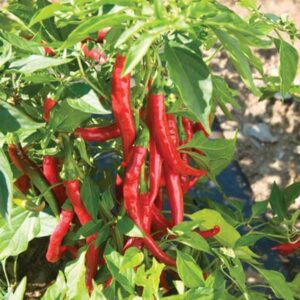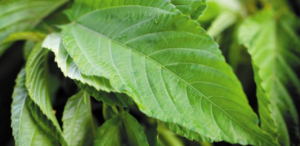Dogwood trees are popular ornamental trees known for their beautiful flowers and attractive foliage. These trees belong to the genus Cornus and are native to North America, Europe, and Asia. Dogwood trees are widely planted in gardens and landscapes for their stunning displays of colorful blooms in the spring months. One of the most well-known species is the flowering dogwood (Cornus florida), which produces showy white or pink flowers in the shape of cross-like structures, often mistaken as petals. Another popular species is the Pacific dogwood (Cornus nuttallii), native to the western United States, known for its creamy-white flowers and red berries in the fall. Dogwood trees are also valued for their vibrant foliage, with leaves that turn various shades of red, purple, and orange in the autumn, adding to their appeal throughout the year. Additionally, the dogwood tree is often used to attract wildlife, such as birds, due to its berries and sheltered branches. For optimal growth, dogwood trees prefer moist, well-drained soil and partial shade, although some species can toleratethe full shade. These trees require regular watering, especially during dry periods, and benefit from occasional pruning to maintain their shape and health. With proper care, dogwood trees can provide long-lasting beauty and enjoyment in residential and public spaces.
The Majestic Dogwood Tree
The majestic Dogwood tree (Cornus florida) is a popular ornamental tree known for its beautiful spring blooms. Native to Eastern North America, this tree typically reaches a height of 20-30 feet and features stunning white or pink flowers that resemble delicate petals. The flowers bloom in clusters, creating a breathtaking display against the backdrop of its distinctive bark, which is smooth and mottled in shades of gray. Dogwood trees are also valued for their attractive foliage, with leaves that turn vibrant shades of red and purple in the fall. In addition to its visual appeal, the Dogwood tree is important for wildlife, providing food and shelter for birds and other animals. Planting a Dogwood tree in your garden can add a touch of elegance and natural beauty while attracting wildlife to your outdoor space. These trees prefer partial shade and moist, well-drained soil, making them a versatile and relatively low-maintenance addition to any landscape.
Dazzling Dogwood Trees: Nature’s Spring Spectacle
Dazzling Dogwood trees, known for their breathtaking display of delicate blooms, are nature’s spring spectacle. These beautiful trees are native to both North America and Asia, and they come in various species, including the popular flowering dogwood (Cornus florida) and the Pacific dogwood (Cornus nuttallii). Dogwoods are prized for their stunning flowers, which can be white, pink, or red, and appear in early spring before the leaves emerge, creating a stunning contrast against the bare branches. One of the most iconic features of dogwood trees is their distinctive four-petaled flowers, which are often mistaken for petals but are actually bracts that surround the true flower in the center.
In fall, the leaves of dogwood trees turn vibrant shades of red, orange, and purple, providing yet another show-stopping display. Dogwoods prefer well-drained soil and partial shade, making them versatile and adaptable to different growing conditions. They also attract birds and butterflies with their nectar-rich blooms, adding to their ecological value. Dogwoods have a rich symbolism in various cultures, often representing rebirth, purity, and protection. Whether in a woodland setting or a residential garden, Dazzling Dogwood trees bring a touch of elegance and beauty to the spring landscape, captivating beholders with their natural splendor.This unique structure adds to the allure of dogwoods, making them a favorite in gardens, parks, and landscapes..
Dogwood Tree Varieties and Characteristics Comparison Table
| Category | Information |
| ——————– | ————————— |
| Scientific Name | Cornus florida |
| Common Name | Dogwood |
| Native Range | Eastern United States |
| Flower Color | White or pink |
| Leaf Type | Deciduous |
| Height | 15-30 feet |
| Growing Conditions | Partial shade, well-drained soil |
| Bloom Time | Spring |
FAQ
FAQs about Dogwood Trees:
Q: What is a dogwood tree?
A: Dogwood trees are ornamental trees that are known for their beautiful flowers and attractive foliage. They come in a variety of species and are popular in landscaping for their aesthetic appeal.
Q: When do dogwood trees bloom?
A: Dogwood trees typically bloom in the spring, usually in April to May, depending on the species and the climate in which they are planted.
Q: How do I care for a dogwood tree?
A: Dogwood trees prefer well-drained soil and partial shade. They should be watered regularly, especially during dry periods. Pruning may be necessary to maintain the tree’s shape and health.
Q: Do dogwood trees attract wildlife?
A: Yes, dogwood trees are known to attract birds with their berries, providing a food source for them. The flowers also attract pollinators such as bees and butterflies.
Q: Are dogwood trees susceptible to any diseases?
A: Dogwood trees can be affected by diseases such as powdery mildew, anthracnose, and Dogwood blight. It is important to monitor the tree for signs of disease and take appropriate measures to prevent and treat any issues.
Q: Can I plant a dogwood tree in a container?
A: Yes, certain species of dogwood trees can be grown in containers, but it is important to choose a variety that is suitable for container growing and ensure that the tree has adequate space and drainage.
Q: How long does it take for a dogwood tree to mature?
A: Dogwood trees grow at a moderate rate and can take several years to reach their full mature height, which can range from 15 to 30 feet depending on the species.
Q: Can dogwood trees tolerate cold temperatures?
A: Dogwood trees are generally hardy and can tolerate cold temperatures, but some species may be more susceptible to frost damage. It is advisable to protect young trees during harsh winter conditions.
- Cat Palm vs Majesty Palm: Which Should You Choose? - June 30, 2024
- Flowers That Survive Winter: Discover the Exceptional No. 5 - June 30, 2024
- The Ultimate Guide to the Growth and Care of the Black Pagoda Lipstick Plant - June 29, 2024




